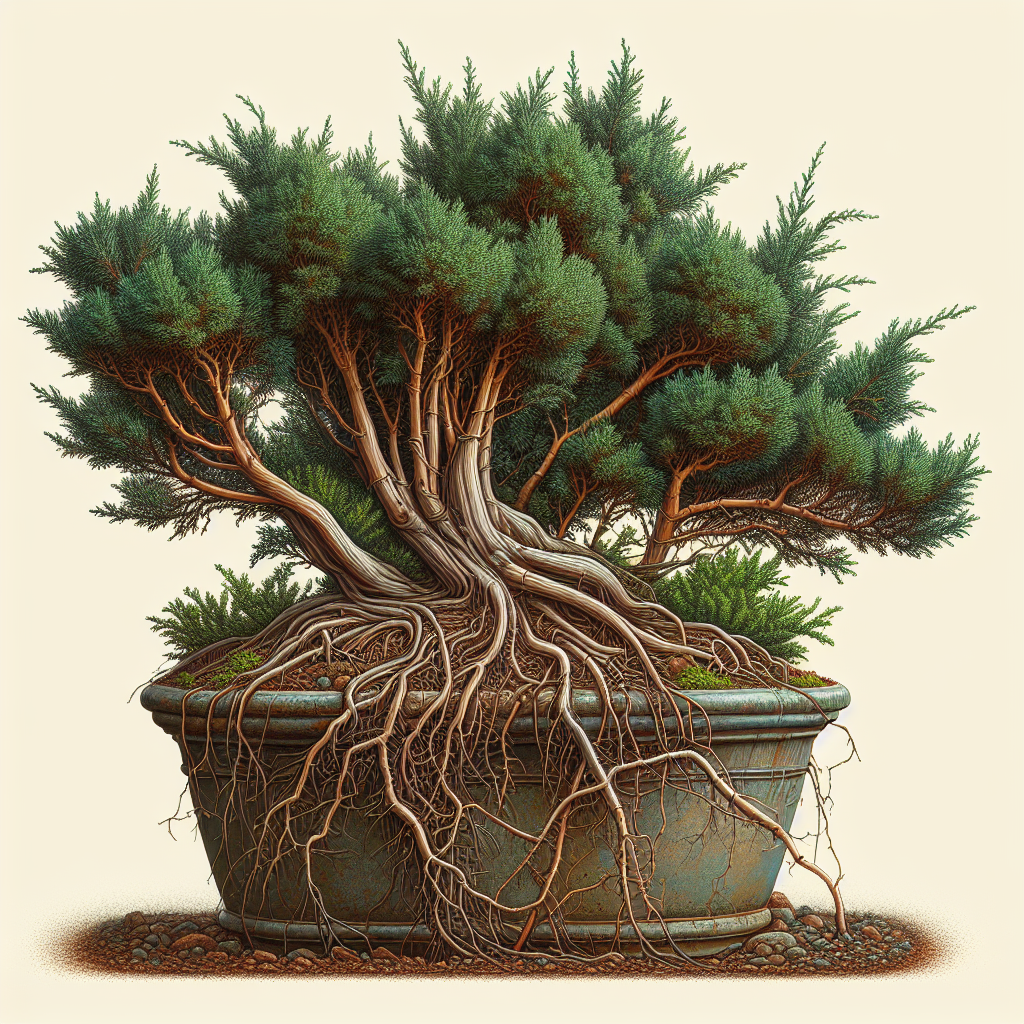Junipers are a popular choice for bonsai enthusiasts and gardeners looking to add some greenery to their outdoor spaces. These resilient plants are known for their striking foliage and unique root structures. When grown in pots, understanding the root structure of junipers is essential to ensuring the health and longevity of these plants.
Junipers have a fibrous root system that differs slightly from other woody plants. Their roots tend to grow horizontally rather than vertically, making them well-suited for shallow containers like bonsai pots. This horizontal growth allows junipers to spread out and anchor themselves securely in the soil, providing stability and support for the plant.
In pot-grown junipers, it’s important to periodically inspect the root structure to ensure that they are healthy and not becoming root-bound. Root-bound junipers can exhibit stunted growth, yellowing leaves, and overall poor health. To prevent this from happening, it’s recommended to repot junipers every 2-3 years to give them room to grow and thrive.
When repotting junipers, it’s crucial to carefully remove the plant from its current container and gently tease out the roots. Trim any circling or tangled roots with sterilized pruning shears to encourage new growth and prevent overcrowding. It’s also a good idea to prune back some of the top growth of the plant at this time to help maintain balance between the roots and foliage.
After repotting, be sure to water thoroughly to help settle the soil around the roots and remove any air pockets that may have formed during transplantation. Junipers prefer slightly acidic soil with good drainage, so be sure to use a well-draining potting mix specifically designed for woody plants like junipers.
In addition to regular repotting, proper watering is crucial for maintaining healthy root structure in potted junipers. These plants do not like sitting in waterlogged soil as it can lead to root rot and other issues. Instead, water deeply but infrequently, allowing the soil to dry out slightly between waterings.
Fertilizing is another important aspect of caring for potted junipers’ root structure. These plants are light feeders but benefit from occasional applications of balanced fertilizer during the growing season. Be sure not to over-fertilize as this can lead to nutrient imbalances that may harm your juniper’s health.
In addition to regular maintenance tasks like repotting, watering, and fertilizing, it’s also essential to monitor your potted juniper for signs of pests or disease that could impact their root structure. Common pests that affect junipers include spider mites, scale insects, and aphids. Treat infestations promptly with insecticidal soap or horticultural oil before they have a chance to cause serious damage.
Diseases like powdery mildew or fungal infections can also impact your potted juniper’s root structure if left untreated. Be sure to provide good air circulation around your plant by placing it in a location with plenty of sunlight and avoiding overcrowding with other plants. If you notice any signs of disease on your juniper, isolate it from other plants immediately and treat as needed with fungicides or other appropriate remedies.
In conclusion, understanding the root structure of junipers planted in pots is essential for maintaining healthy and thriving plants. By regularly inspecting their roots, repotting when necessary, providing proper watering and fertilization, monitoring for pests or disease, you can ensure that your potted juniper will continue adding beauty greenery while enhancing your outdoor space for years come!













